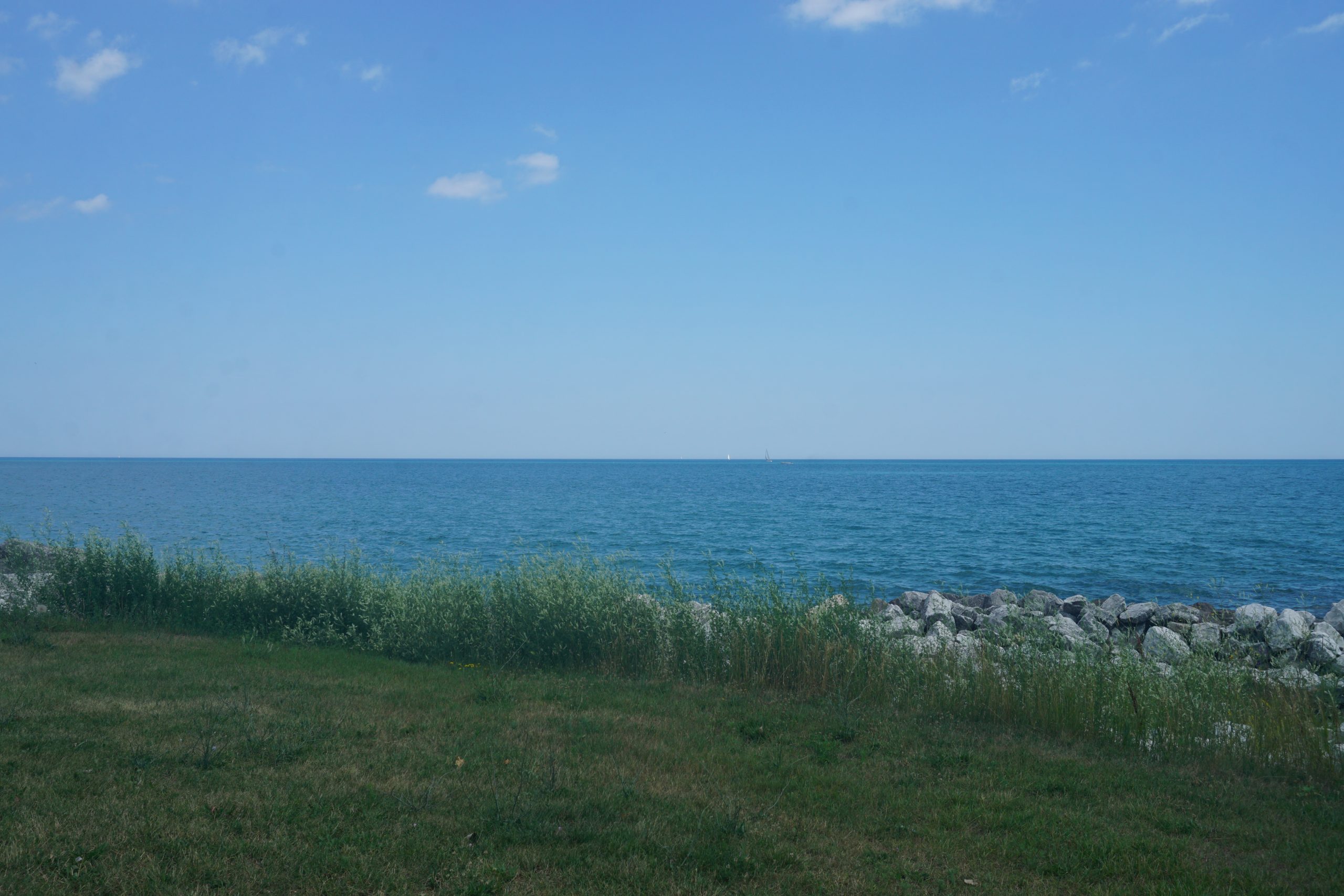Lake Michigan, the second-largest Great Lake by volume, has consistently been the deadliest of the Great Lakes. The number of drownings recorded in Lake Michigan per year is a sobering statistic that highlights the importance of water safety education and the need for increased lifeguard presence to reduce the number of tragic incidents.
The Alarming Statistics of Lake Michigan Deaths per Year

According to the data, the number of drownings in Lake Michigan has fluctuated over the years, with some years seeing a higher number of fatalities than others. Here’s a breakdown of the Lake Michigan deaths per year:
| Year | Drownings | Additional Details |
|---|---|---|
| 2024 | 37 | +2 Critical Condition or Unknown Cause |
| 2023 | 41 | A seven-year low |
| 2022 | 45 | +6 Unknown Final Outcome or Cause of Death |
| 2021 | 48 | +2 Unknown Final Outcome |
| 2020 | 56 | +1 Unknown Condition |
| 2019 | 97 | – |
| 2018 | 117 | – |
| 2017 | 88 | – |
| 2016 | 99 | – |
| 2015 | 55 | – |
| 2014 | 54 | – |
| 2013 | 67 | – |
| 2012 | 99 | – |
| 2011 | 88 | – |
| 2010 | 74 | – |
These statistics paint a concerning picture of the dangers that Lake Michigan poses to both experienced and novice water enthusiasts. The fluctuations in the number of drownings from year to year highlight the unpredictable nature of the lake and the need for constant vigilance and safety measures.
Factors Contributing to Lake Michigan Deaths

Several factors contribute to the high number of drownings in Lake Michigan, including:
-
Unpredictable Weather and Waves: Lake Michigan is known for its sudden and severe weather changes, with strong winds, high waves, and dangerous currents that can quickly turn a calm day into a life-threatening situation.
-
Cold Water Temperatures: Even during the summer months, the water temperature in Lake Michigan can be dangerously cold, leading to hypothermia and making it difficult for swimmers to stay afloat.
-
Rip Currents: Lake Michigan is notorious for its powerful rip currents, which can quickly pull swimmers away from the shore and make it nearly impossible to swim back.
-
Lack of Lifeguard Presence: Many beaches along Lake Michigan do not have a consistent lifeguard presence, leaving swimmers and water enthusiasts without the necessary support and supervision to stay safe.
-
Alcohol and Substance Abuse: Alcohol and drug use can impair judgment and decision-making, increasing the risk of drowning and other water-related accidents.
-
Inexperience and Overconfidence: Some individuals may underestimate the power and unpredictability of Lake Michigan, leading to risky behavior and a lack of proper safety precautions.
Strategies to Reduce Lake Michigan Deaths
To address the high number of drownings in Lake Michigan, several strategies can be implemented:
-
Increased Water Safety Education: Educating the public, especially young people, about the dangers of Lake Michigan and the importance of water safety can help prevent many drowning incidents. This can include teaching swimming skills, recognizing and responding to rip currents, and the proper use of life jackets.
-
Expanded Lifeguard Coverage: Increasing the number of lifeguards and their presence at beaches along Lake Michigan can provide a crucial layer of protection and assistance for swimmers and water enthusiasts.
-
Improved Weather and Hazard Monitoring: Enhancing the monitoring and communication of weather conditions, wave heights, and other hazards can help water users make informed decisions about when and where it is safe to enter the lake.
-
Stricter Enforcement of Safety Regulations: Enforcing laws and regulations related to water safety, such as mandatory life jacket use and restrictions on alcohol and substance use near the water, can help deter risky behavior and save lives.
-
Collaboration Between Agencies and Organizations: Coordinating efforts between local, state, and federal agencies, as well as community organizations, can help develop and implement comprehensive strategies to address the issue of Lake Michigan drownings.
-
Technological Advancements: Exploring and implementing new technologies, such as early warning systems, rescue drones, and improved communication devices, can enhance the ability to respond to and prevent water-related emergencies.
By addressing these factors and implementing a multi-faceted approach to water safety, the number of Lake Michigan deaths per year can be reduced, and the Great Lake can be enjoyed more safely by both locals and visitors alike.
Conclusion
The sobering statistics of Lake Michigan deaths per year serve as a stark reminder of the inherent dangers that this Great Lake poses to water enthusiasts. By understanding the contributing factors and implementing comprehensive strategies to improve water safety, we can work towards reducing the number of tragic incidents and ensuring that Lake Michigan remains a cherished destination for generations to come.
Reference:
– National Park Service – Drowning Statistics
– Great Lakes Surf Rescue Project – Drowning Statistics
– [Chicago Tribune – Lake Michigan Drownings](https://www.chicagotribune.com/news/ct-lake-michigan-drownings-20190819-yvnhbwjjjjfhxnxjnxhxnxhxnxhxnxhxnxhxnxhxnxhxnxhxnxhxnxhxnxhxnxhxnxhxnxhxnxhxnxhxnxhxnxhxnxhxnxhxnxhxnxhxnxhxnxhxnxhxnxhxnxhxnxhxnxhxnxhxnxhxnxhxnxhxnxhxnxhxnxhxnxhxnxhxnxhxnxhxnxhxnxhxnxhxnxhxnxhxnxhxnxhxnxhxnxhxnxhxnxhxnxhxnxhxnxhxnxhxnxhxnxhxnxhxnxhxnxhxnxhxnxhxnxhxnxhxnxhxnxhxnxhxnxhxnxhxnxhxnxhxnxhxnxhxnxhxnxhxnxhxnxhxnxhxnxhxnxhxnxhxnxhxnxhxnxhxnxhxnxhxnxhxnxhxnxhxnxhxnxhxnxhxnxhxnxhxnxhxnxhxnxhxnxhxnxhxnxhxnxhxnxhxnxhxnxhxnxhxnxhxnxhxnxhxnxhxnxhxnxhxnxhxnxhxnxhxnxhxnxhxnxhxnxhxnxhxnxhxnxhxnxhxnxhxnxhxnxhxnxhxnxhxnxhxnxhxnxhxnxhxnxhxnxhxnxhxnxhxnxhxnxhxnxhxnxhxnxhxnxhxnxhxnxhxnxhxnxhxnxhxnxhxnxhxnxhxnxhxnxhxnxhxnxhxnxhxnxhxnxhxnxhxnxhxnxhxnxhxnxhxnxhxnxhxnxhxnxhxnxhxnxhxnxhxnxhxnxhxnxhxnxhxnxhxnxhxnxhxnxhxnxhxnxhxnxhxnxhxnxhxnxhxnxhxnxhxnxhxnxhxnxhxnxhxnxhxnxhxnxhxnxhxnxhxnxhxnxhxnxhxnxhxnxhxnxhxnxhxnxhxnxhxnxhxnxhxnxhxnxhxnxhxnxhxnxhxnxhxnxhxnxhxnxhxnxhxnxhxnxhxnxhxnxhxnxhxnxhxnxhxnxhxnxhxnxhxnxhxnxhxnxhxnxhxnxhxnxhxnxhxnxhxnxhxnxhxnxhxnxhxnxhxnxhxnxhxnxhxnxhxnxhxnxhxnxhxnxhxnxhxnxhxnxhxnxhxnxhxnxhxnxhxnxhxnxhxnxhxnxhxnxhxnxhxnxhxnxhxnxhxnxhxnxhxnxhxnxhxnxhxnxhxnxhxnxhxnxhxnxhxnxhxnxhxnxhxnxhxnxhxnxhxnxhxnxhxnxhxnxhxnxhxnxhxnxhxnxhxnxhxnxhxnxhxnxhxnxhxnxhxnxhxnxhxnxhxnxhxnxhxnxhxnxhxnxhxnxhxnxhxnxhxnxhxnxhxnxhxnxhxnxhxnxhxnxhxnxhxnxhxnxhxnxhxnxhxnxhxnxhxnxhxnxhxnxhxnxhxnxhxnxhxnxhxnxhxnxhxnxhxnxhxnxhxnxhxnxhxnxhxnxhxnxhxnxhxnxhxnxhxnxhxnxhxnxhxnxhxnxhxnxhxnxhxnxhxnxhxnxhxnxhxnxhxnxhxnxhxnxhxnxhxnxhxnxhxnxhxnxhxnxhxnxhxnxhxnxhxnxhxnxhxnxhxnxhxnxhxnxhxnxhxnxhxnxhxnxhxnxhxnxhxnxhxnxhxnxhxnxhxnxhxnxhxnxhxnxhxnxhxnxhxnxhxnxhxnxhxnxhxnxhxnxhxnxhxnxhxnxhxnxhxnxhxnxhxnxhxnxhxnxhxnxhxnxhxnxhxnxhxnxhxnxhxnxhxnxhxnxhxnxhxnxhxnxhxnxhxnxhxnxhxnxhxnxhxnxhxnxhxnxhxnxhxnxhxnxhxnxhxnxhxnxhxnxhxnxhxnxhxnxhxnxhxnxhxnxhxnxhxnxhxnxhxnxhxnxhxnxhxnxhxnxhxnxhxnxhxnxhxnxhxnxhxnxhxnxhxnxhxnxhxnxhxnxhxnxhxnxhxnxhxnxhxnxhxnxhxnxhxnxhxnxhxnxhxnxhxnxhxnxhxnxhxnxhxnxhxnxhxnxhxnxhxnxhxnxhxnxhxnxhxnxhxnxhxnxhxnxhxnxhxnxhxnxhxnxhxnxhxnxhxnxhxnxhxnxhxnxhxnxhxnxhxnxhxnxhxnxhxnxhxnxhxnxhxnxhxnxhxnxhxnxhxnxhxnxhxnxhxnxhxnxhxnxhxnxhxnxhxnxhxnxhxnxhxnxhxnxhxnxhxnxhxnxhxnxhxnxhxnxhxnxhxnxhxnxhxnxhxnxhxnxhxnxhxnxhxnxhxnxhxnxhxnxhxnxhxnxhxnxhxnxhxnxhxnxhxnxhxnxhxnxhxnxhxnxhxnxhxnxhxnxhxnxhxnxhxnxhxnxhxnxhxnxhxnxhxnxhxnxhxnxhxnxhxnxhxnxhxnxhxnxhxnxhxnxhxnxhxnxhxnxhxnxhxnxhxnxhxnxhxnxhxnxhxnxhxnxhxnxhxnxhxnxhxnxhxnxhxnxhxnxhxnxhxnxhxnxhxnxhxnxhxnxhxnxhxnxhxnxhxnxhxnxhxnxhxnxhxnxhxnxhxnxhxnxhxnxhxnxhxnxhxnxhxnxhxnxhxnxhxnxhxnxhxnxhxnxhxnxhxnxhxnxhxnxhxnxhxnxhxnxhxnxhxnxhxnxhxnxhxnxhxnxhxnxhxnxhxnxhxnxhxnxhxnxhxnxhxnxhxnxhxnxhxnxhxnxhxnxhxnxhxnxhxnxhxnxhxnxhxnxhxnxhxnxhxnxhxnxhxnxhxnxhxnxhxnxhxnxhxnxhxnxhxnxhxnxhxnxhxnxhxnxhxnxhxnxhxnxhxnxhxnxhxnxhxnxhxnxhxnxhxnxhxnxhxnxhxnxhxnxhxn
